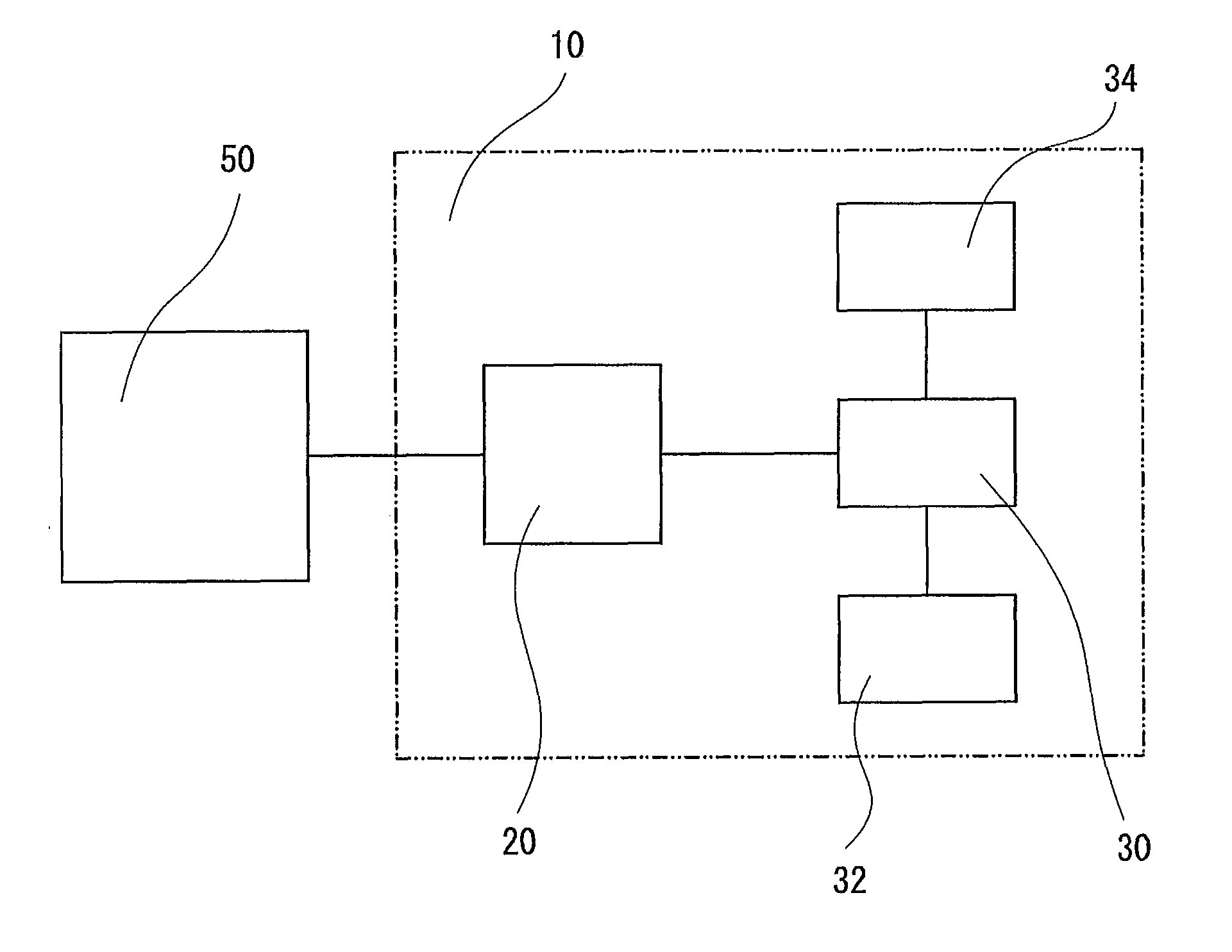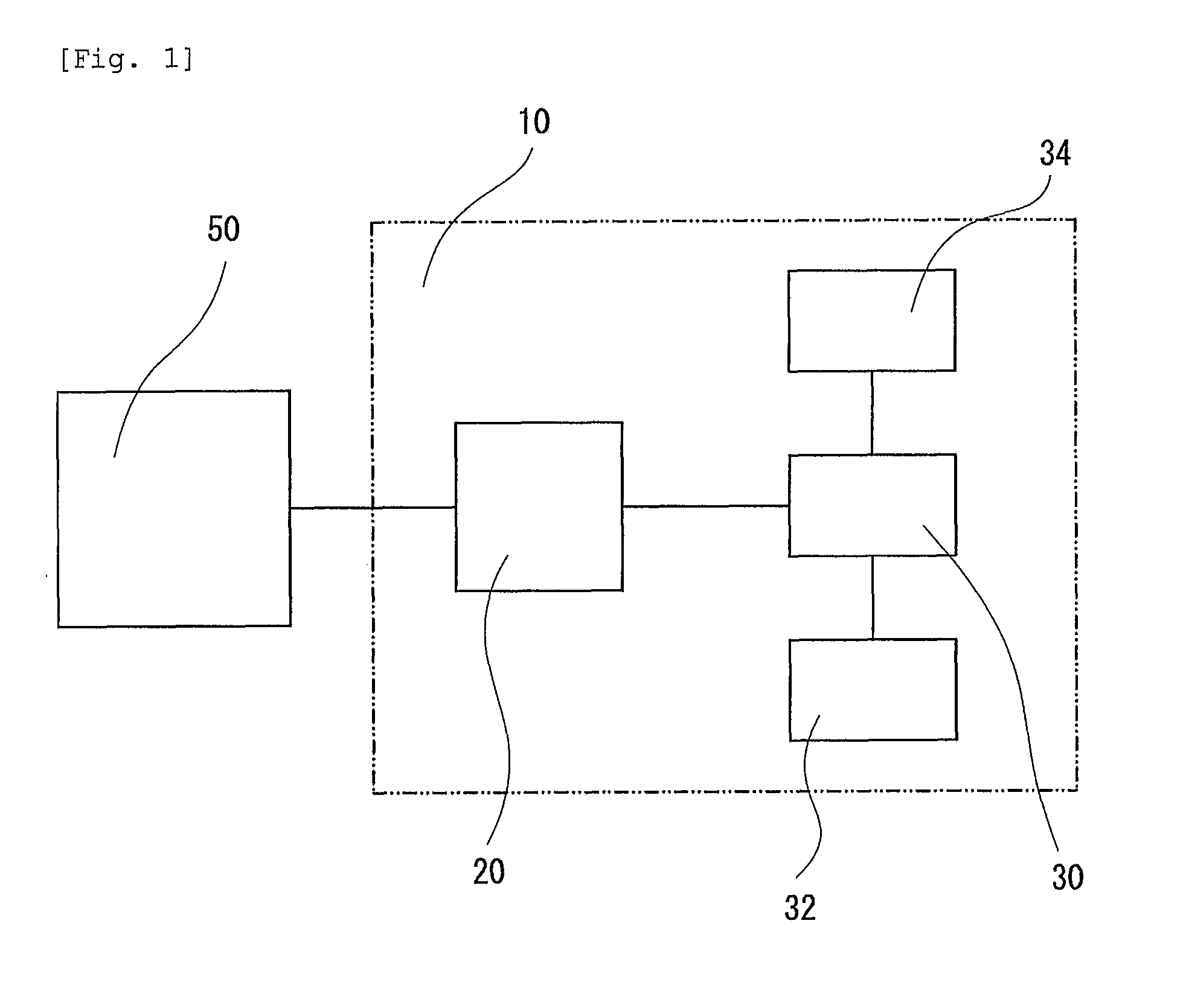Battery Charger and Battery Charge Method
a battery charger and battery technology, applied in secondary cell servicing/maintenance, safety/protection circuits, instruments, etc., can solve the problems of battery failure, no realistic remedy that restores the charged state of the battery, and abrupt battery failure, so as to achieve efficient charge and small battery load
- Summary
- Abstract
- Description
- Claims
- Application Information
AI Technical Summary
Benefits of technology
Problems solved by technology
Method used
Image
Examples
Embodiment Construction
[0047]Embodiments (examples) of the present invention will be described below in more detail with reference to the drawings.
[0048]FIG. 1 is a block diagram showing a first configuration of a battery charger according to the present invention.
[0049]The first configuration of the battery charger 10 according to the present invention includes battery charge means 20 for charging a battery 50 to which the battery charge means 20 is connected and signal analysis means 30 for analyzing the battery based on a signal sent from the battery charge means 20.
[0050]As the signal sent from the battery charge means 20, for example, the voltage across the battery or the current flowing through the battery at the time of charge may be directly used or may be converted by an AD conversion circuit (not shown) into a digital signal.
[0051]When the signal sent from the battery charge means 20 is, for example, the battery voltage or the current flowing through the battery, a splitter, such as shunt and a ...
PUM
 Login to View More
Login to View More Abstract
Description
Claims
Application Information
 Login to View More
Login to View More - R&D
- Intellectual Property
- Life Sciences
- Materials
- Tech Scout
- Unparalleled Data Quality
- Higher Quality Content
- 60% Fewer Hallucinations
Browse by: Latest US Patents, China's latest patents, Technical Efficacy Thesaurus, Application Domain, Technology Topic, Popular Technical Reports.
© 2025 PatSnap. All rights reserved.Legal|Privacy policy|Modern Slavery Act Transparency Statement|Sitemap|About US| Contact US: help@patsnap.com



